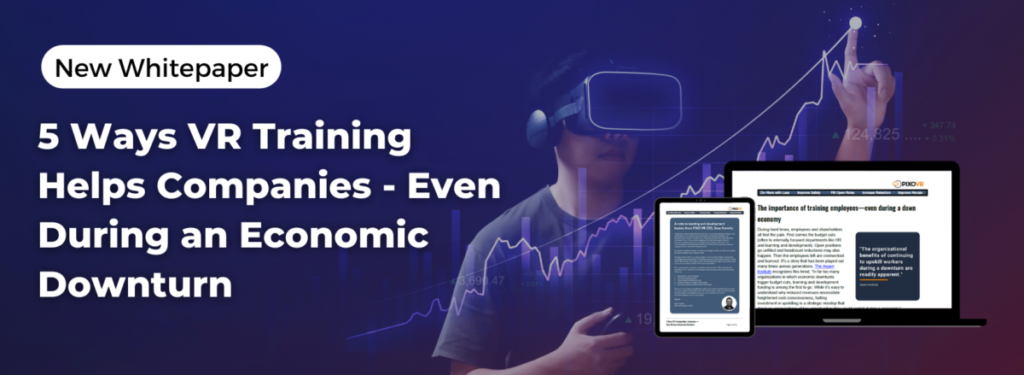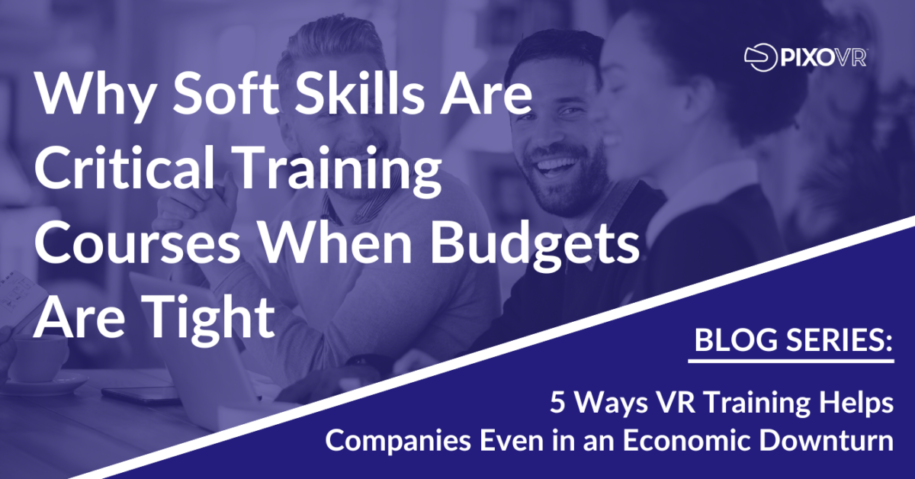The following is an excerpt from our whitepaper: ‘5 Ways VR Training Helps Companies Even in an Economic Downturn’:
Some of the biggest challenges in the workplace today involve the interpersonal relationships and interactions between employees. This can be even more difficult in remote and hybrid work arrangements where digital communications can be misconstrued without the context that comes in a face-to-face interaction. Great companies can lose great employees because of a small percentage of employees that aren’t treating their co-workers with respect. This has become a big problem for companies over the past two years as they battle the Great Resignation.
After feeling the pain of low employee retention, many learning and development leaders are looking for ways to help improve employee satisfaction and overall culture. The best place to look is to consider the characteristics of high-performing teams and the best way to develop those characteristics. This article will discuss where companies often fail and explain how virtual reality (VR) can be a catalyst for positive change.
What are the characteristics of a high performing team?
Higher performing workplaces meet and exceed goals. They innovate and problem solve. They exhibit respect for one another and leadership resolves conflict quickly and keeps the positivity flowing. Quantum Workplace defined eight observed characteristics of high-performing teams.
Eight characteristics of high-performing teams
- Have clear goals tied closely to team and organizational priorities
- Understand how their work fits into the organizational mission
- Have defined roles and responsibilities
- Communicate clearly and respectfully
- Manage work and deadlines based on priorities
- Trust and respect each other
- Celebrate success together and recognize contributions
- Practice continuous learning
Most companies do fairly well at characteristics 1,2, and 3 which involves defining goals and roles. Managers then exhibit characteristics 5 throughout the year, measuring performance via key performance indicators (KPIs) to report on success in meeting the aforementioned goals.
If this was all it took to be high-performing, most companies would be able to boast that moniker. Unfortunately, there is a lack of focus on the soft skills needed to be truly high-performing. Communication (#4), trust and respect (#6), celebration and recognition (#7), and continuous learning (#8) are often ignored when it comes to learning and development programs.
Why do we fail at developing high-performing teams?
An article in Fortune quoted Linda Jingfang Cai, VP of Talent Development at LinkedIn, who said that soft skills are now “the currency of the future workplace.” Effective communication, transparency, and empathy are now more important than ever for in-person and virtual exchanges. Most companies work hardest on goals and roles, but performance falls apart if the team can’t work together well using great communication skills and having a foundational respect for one another.
The problem is that most leaders feel if they provide clear goals and roles, that the rest will happen organically. The reality is that employees are people that are of all different genders, beliefs, races, sizes, and upbringings. They will clash and have difficulty working together. Respect for each other is not inherent. Employees need to be trained to understand each other, resolve conflict, and keep discriminatory language and actions out of the workplace.
When companies focus on enabling continuous learning and specifically, training on communication and treating others with respect, performance follows. And with great performance and interpersonal relationships, it becomes natural for teams to recognize achievements and celebrate successes together.
How can VR help improve employee performance?
Virtual reality (VR) has been proven to be an incredible medium to teach employees soft skills. The reason is twofold: 1) VR creates a life-like environment and situation where employees can practice skills, and 2) It is a completely safe space for employees to practice difficult conversations and interactions. VR enables employees to take on things like conflict resolution and gender inclusion without worrying about performing poorly or getting it wrong in front of an instructor or peer. Instead, employees can practice responses and get life-like reactions without judgment.
Being able to learn and practice soft skills in a safe space is critical to changing behaviors. VR is the only training medium that can actually move employees emotionally. It can allow them to experience harassment or negative interactions. It can truly help them understand the impact of negative interactions and the power of positive ones.
Can VR soft skills training drive real change?
There have been some great studies that prove the effectiveness of using VR for soft skills training that are worth looking into. That said, a great example of VR soft skill training working in practice is at H&R Block. They use VR training to teach new agents soft skills like communication and respect. Using VR resulted in faster onboarding and 50% reduction in customer hold time due to increased competency in solving issues. That is high performance that impacted the company’s bottom line.
There is also a competitive advantage to offering VR training content for soft skills. Most companies are not mandated to offer courses like diversity and inclusion. When they do offer it, this is seen as a signal to prospective and current employees that their employer cares about interpersonal relationships and respects and embraces employee diversity. And that adds up to improving retention rates and filling positions with great candidates.
Offering VR soft skills training has never been easier as there is a library of existing soft skills content available. There are also helpful guides on how to bring VR into an existing training program and one that details the cost savings of VR training so L&D leaders can make the case for adding VR. Improving employee culture, retention, and overall productivity is possible with VR.
Download the whitepaper: 5 Ways VR Training Helps Companies Even in an Economic Downturn’:


Leave a Reply
You must be logged in to post a comment.